After arriving in Tokyo, the first sightseeing trip I indulged in was to Ginza to see the Art Aquarium Museum in famous Mitsukoshi Department Store. For this exhibition, goldfish aquariums, decoration, neon lighting and trance music were arranged to create a unique and inspiring experience. I discovered not only traditional Japanese influences but also new and exciting ideas.
Photos are mine unless otherwise noted, but completely unedited. I have to admit: I don’t know much about photo editing and the last weeks have been so busy, I just wanted to get something out to the stack. Forgive me and appreciate them for what they are: un-instagrammed.
Vermillion Treasure
Goldfish themselves have been beloved pets in Japan since 1502, when Chinese traders first sold them to samurai and nobility. A vermillion colour with a gold glint was seen as doubly lucky as gold represents wealth and red is said to dispel illness or misfortune. Until about 1868, however, only aristocrats could afford to keep goldfish.1
Back then, the fish were kept in ponds or porcelain pots. Because they could only be watched from above, varieties without any dorsal fins or with tail fins that spread out to the sides were considered most attractive.2
With the modernization of Japan in the Meiji period, more people began to cultivate goldfish and breed different varieties. Kingyō-sukui3 where you try to scoop up live fish with a paper ladle has been a popular game at summer festivals ever since the Edo period. From woodblock prints to hand towels and keychain pendants, goldfish remain a central element in Japanese popular culture and art.
Echoes of Tradition
One popular exhibit was a series of short square aquariums on pedestals, lighted from below so we could observe the goldfish drifting and interacting among sparse foliage. Looking in from above or from the side, the water surface distorted the view, multiplied the fish—this harkens back to the Edo period when goldfish were admired from above. The pedestals were decorated with kimono obi featuring beautiful traditional patterns, many of which symbolize long life, prosperity or luck.
Origami, the Japanese art of paper folding, is not only about paper cranes but also has ceremonial uses (in which case it is called origata). Slips or ropes of folded white paper are used to purify or to signify sacred space. The huge faceted fishbowl with paper goldfish in the background was obviously inspired by origami.
Traditional Japanese lanterns served as inspiration for multiple exhibits. The chōchin4-shaped fishbowls lining a corridor decorated with momiji (autumn leaf) and even one or two pumpkins put me in the spirit of a beautiful autumn night at the neighbourhood shrine. The bowls also acted as magnifying glasses on the goldfish. The most famous chōchin is the massive lantern that hangs at Kaminarimon of Sensoji in Tokyo. Made of bamboo, it weighs 700 kg!
Another exhibit was based on the andon5, a rectangular type of lantern, decorated with a protective hemp leaf pattern. The goldfish swimming in its orange-red light serve as guides along your way, like a flickering but reassuring flame in the dark.
Flowerings of Utopia
This work "expresses imaginary flowers blooming in the sky inspired by heaven, depicting a fantasy world of flowering aquariums". Flowers as well as fountains, ponds, and aquariums have always been a sign of luxury—not for eating or harvesting but for beauty alone. You could even say utopian.
This exhibit reminded me of sceneries from beautiful Chinese fantasy shows such as Love between Fairy and Devil (which Elle Griffin also brings to life in her utopian novel) or The Longest Promise—shows that depict heaven as a pastel-coloured place among the clouds where the wise and virtuous cultivate and strive for enlightenment.
And this in turn always reminds me of Tang Dynasty poet Hanshan who paints a more mournful picture.
Since I came to Cold Mountain
how many thousand years have passed
accepting my fate I fled to the woods
to dwell and gaze in freedom
no one visits the cliffs
forever hidden by clouds
soft grass serves as a mattress
my quilt is the dark blue sky
a boulder makes a fine pillow
Heaven and Earth can crumble and change6
When you descend from the mountain, you might arrive in a lush forest and be soothed by rustling leaves and birdsong. You're surrounded by tall straight bamboo all around, perhaps feeling as if in a high-ceilinged echoing hall. After mountains, forests complete the image of utopia.
Bubbles for Sale
Lastly, there was a gallery featuring ukiyoe (woodblock print painting) by Utagawa Kuniyoshi, one of the Edo period's best-known artists. Kuniyoshi was born in Nihonbashi in Edo (now Tokyo) in 1798 and has a wide variety of works to his name, from more traditional paintings of warriors, actors, and beautiful women to more modern landscapes and caricatures. He also painted animals such as cats and fish in realistic as well as imagined settings.
Kuniyoshi's charm lies in the ever-expanding world of imagination. In terms of the ability to embody the dreams of stories and romance of adventures to the world, he represents an outstanding talent that no one can match, which he can be called an Edo graphic designer.
His Modern Version of Ise Monogatari7 merely has an aquarium in the background. A Variety of Goldfish: Bubbles for Sale8 shows a goldfish bubble seller showcasing his wares in front of other fish, turtles, and even a tadpole.
This blending of the realistic and the mythical or supernatural is typical for Edo period artists of all mediums and something I wrote about in Realism and Unreality in Japanese Storytelling.
At first glance, the art aquarium might be an overwhelmingly modern show of lights and music but upon looking closer, I found a wealth of traditional art and symbolism that made for a truly inspiring experience. So much of Japanese art and philosophy is about appreciating beauty, then as now.
What sort of stories might come out of this experience? These images, especially Edo as seen by Utagawa Kuniyoshi, will definitely stay in my mind for a while. What would you do with them? Feel free to share in the comments!
金魚すくい
行灯
From The Collected Songs of Cold Mountain, translated by Bill Porter (Red Pine), Copper Canyon Press 2000
今様伊勢物がたり, 1849
金魚づくし~玉や玉や, 1830-1843



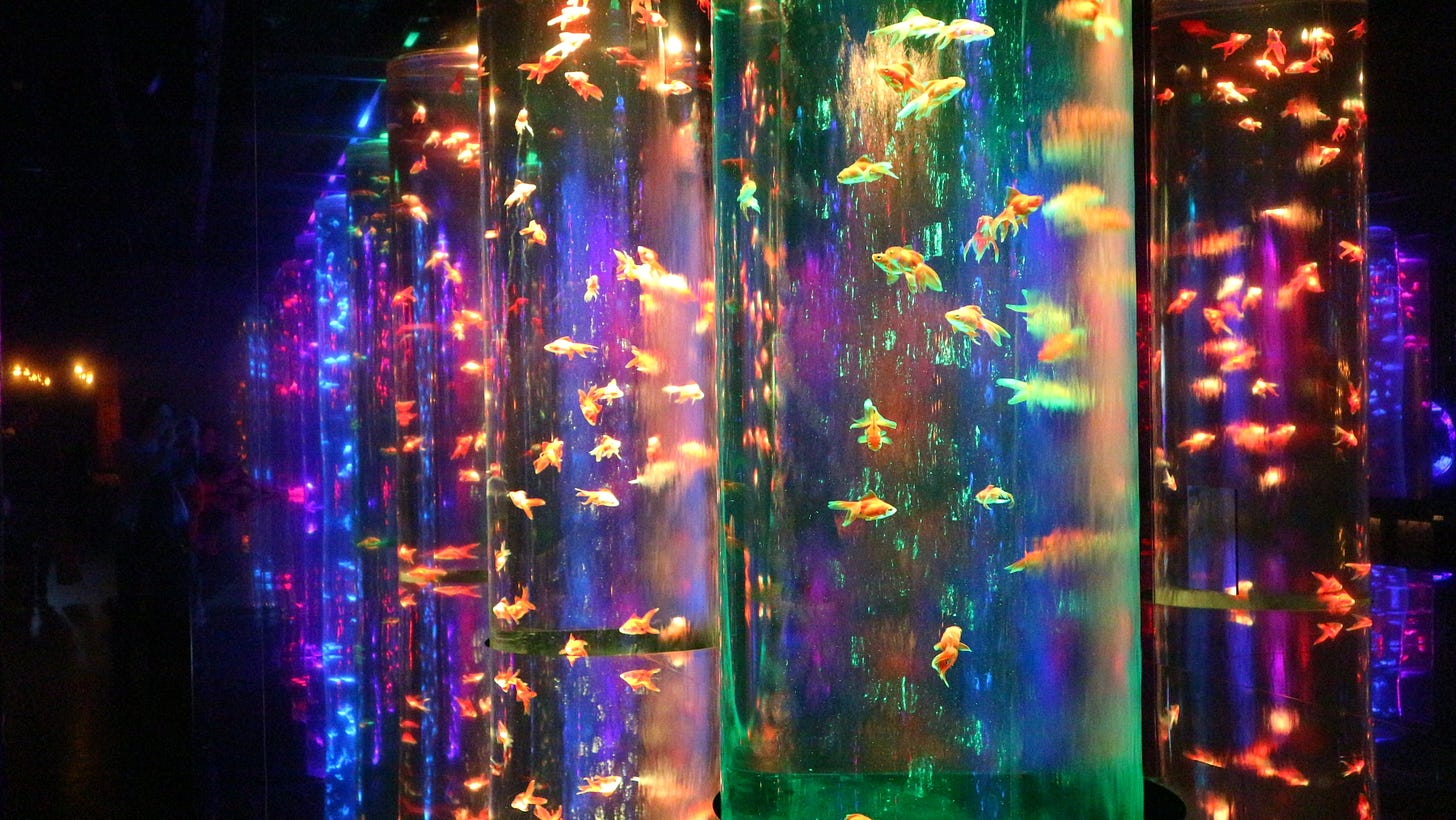
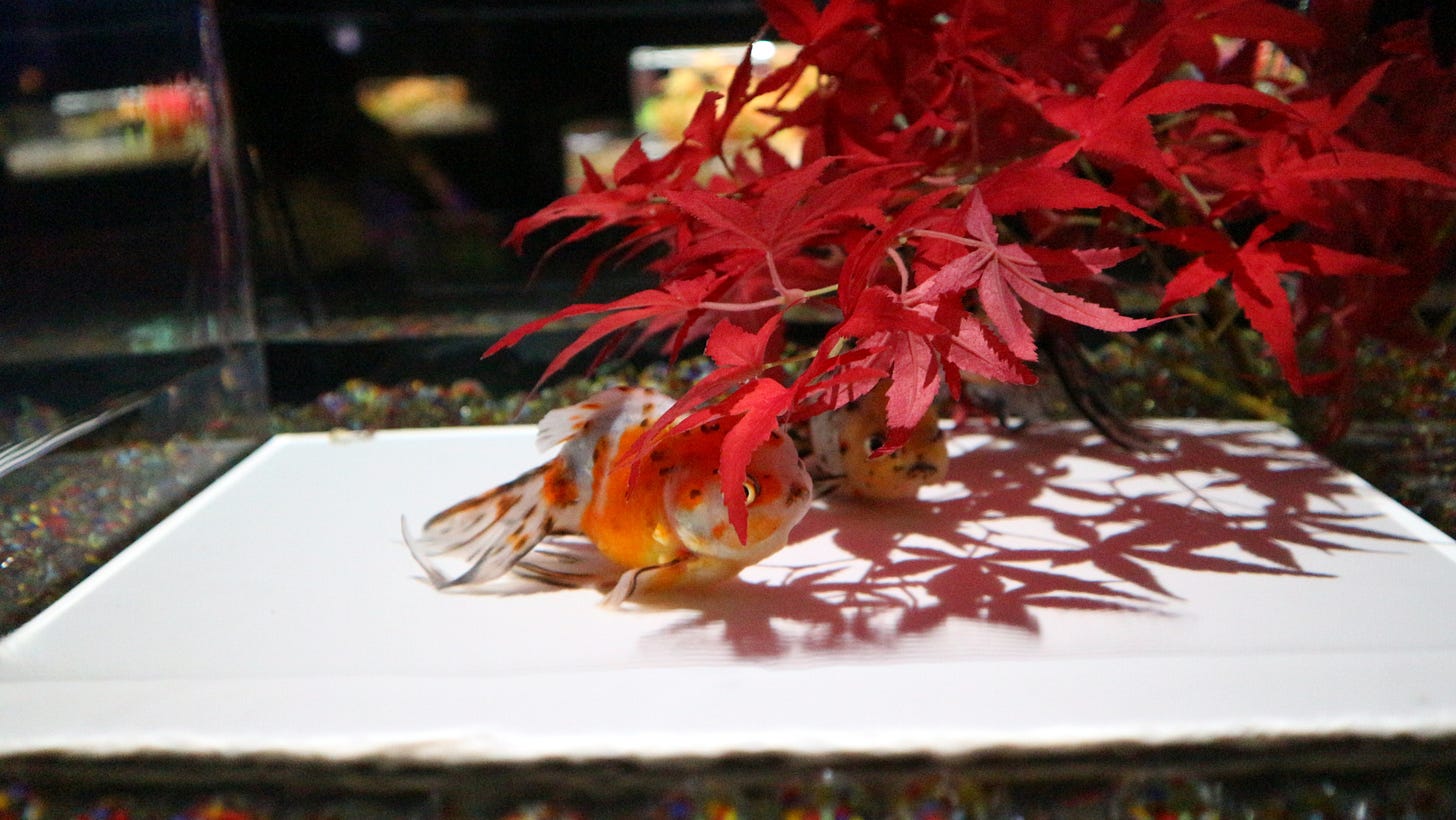
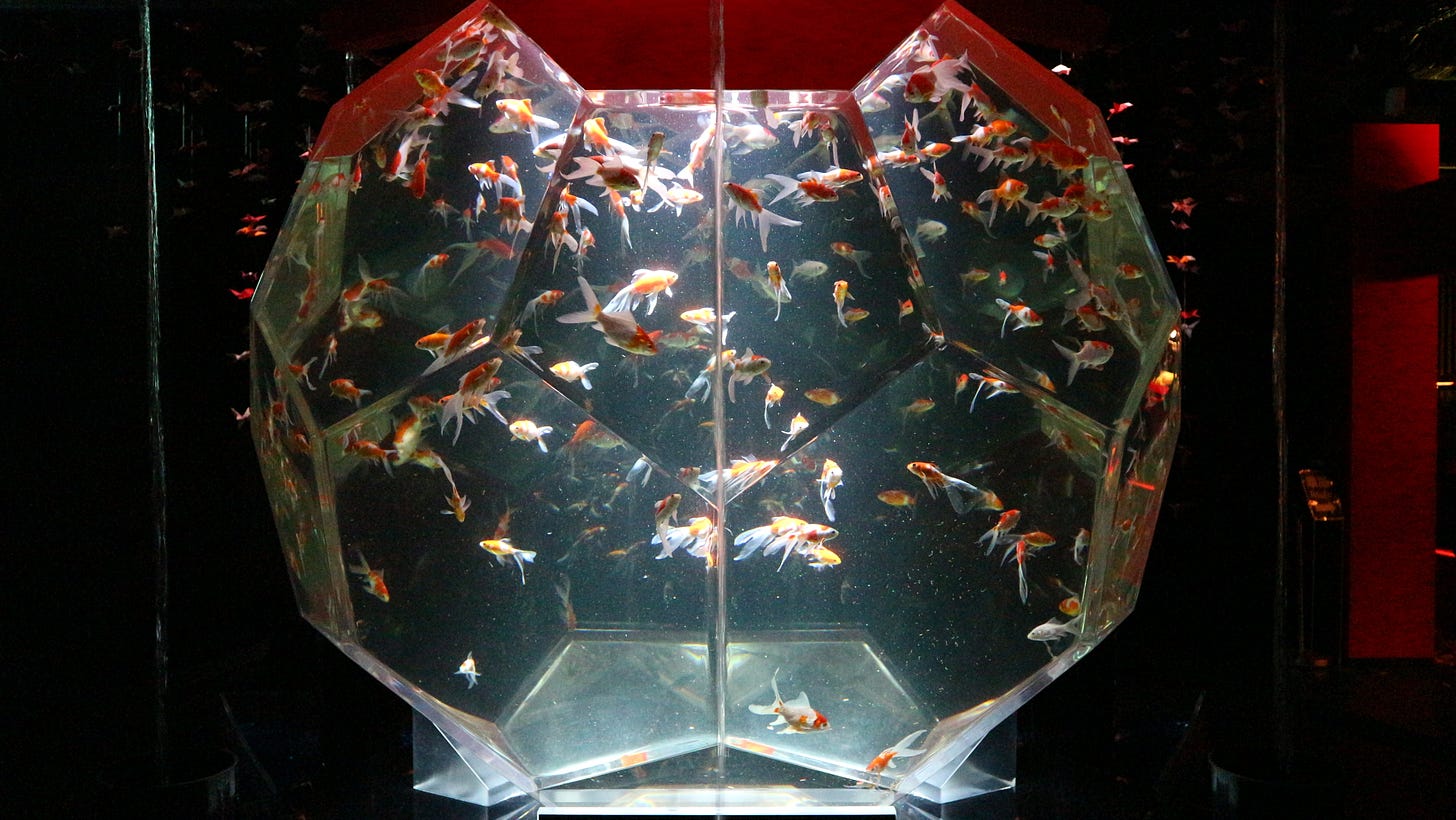
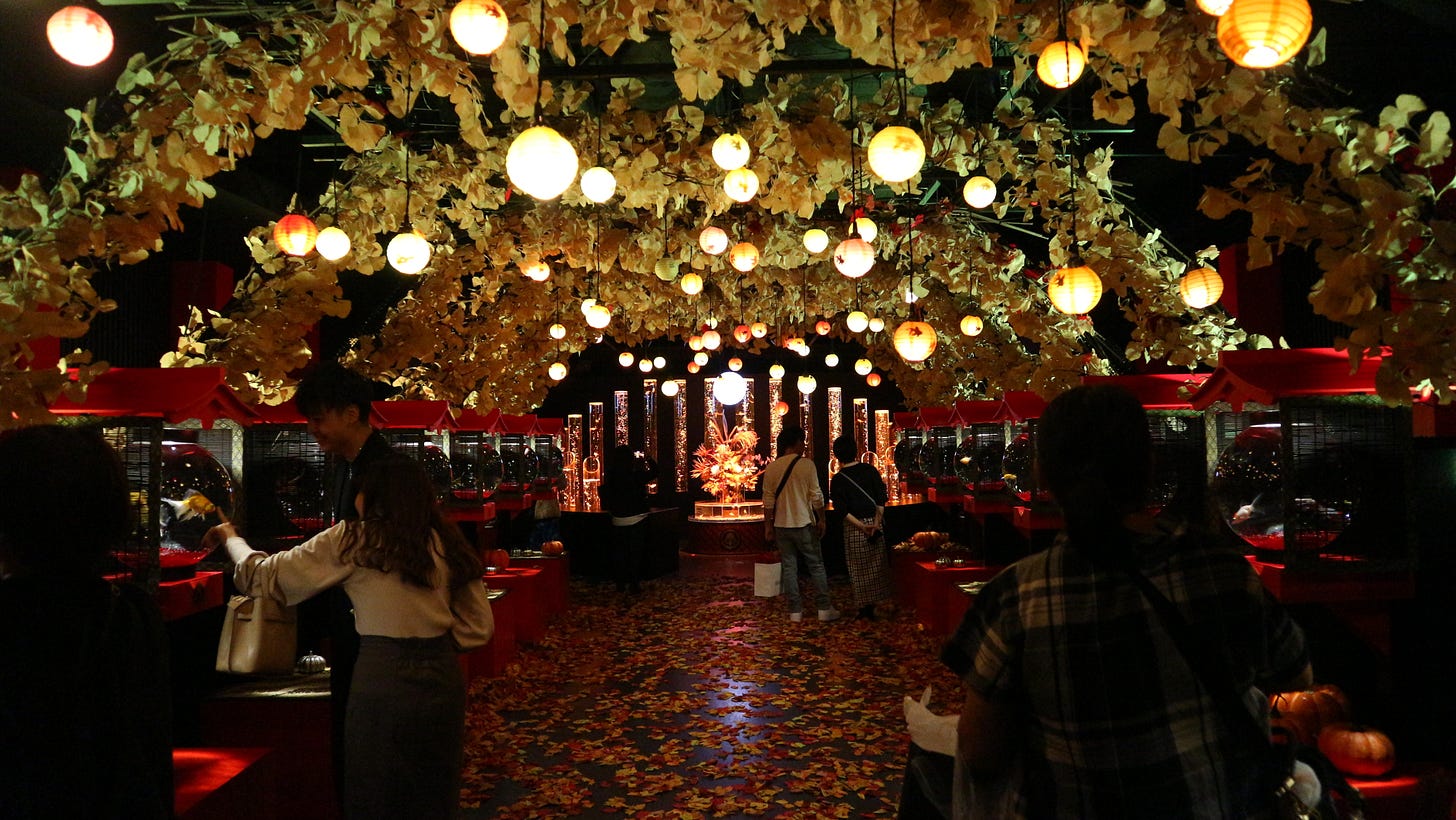
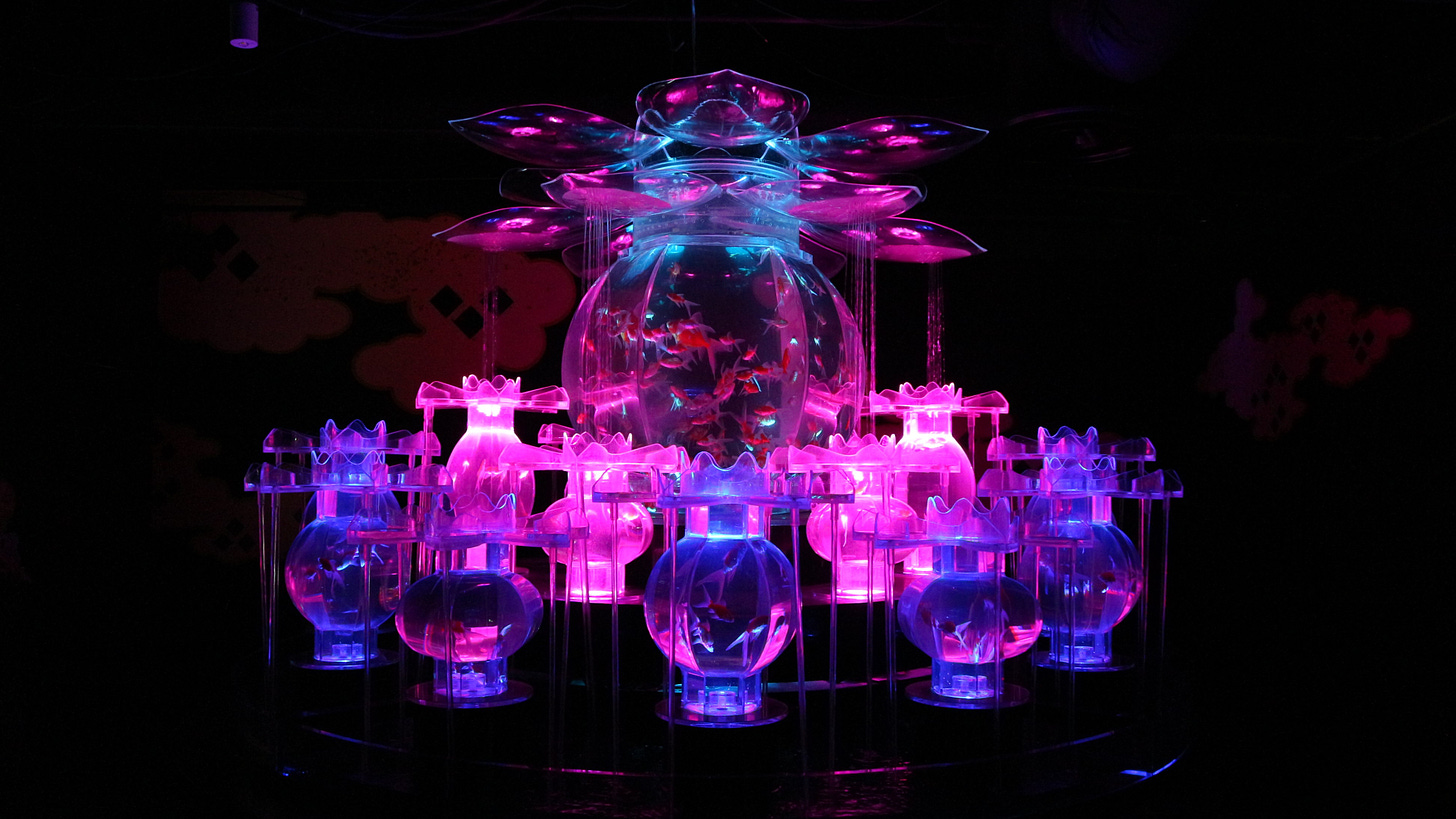
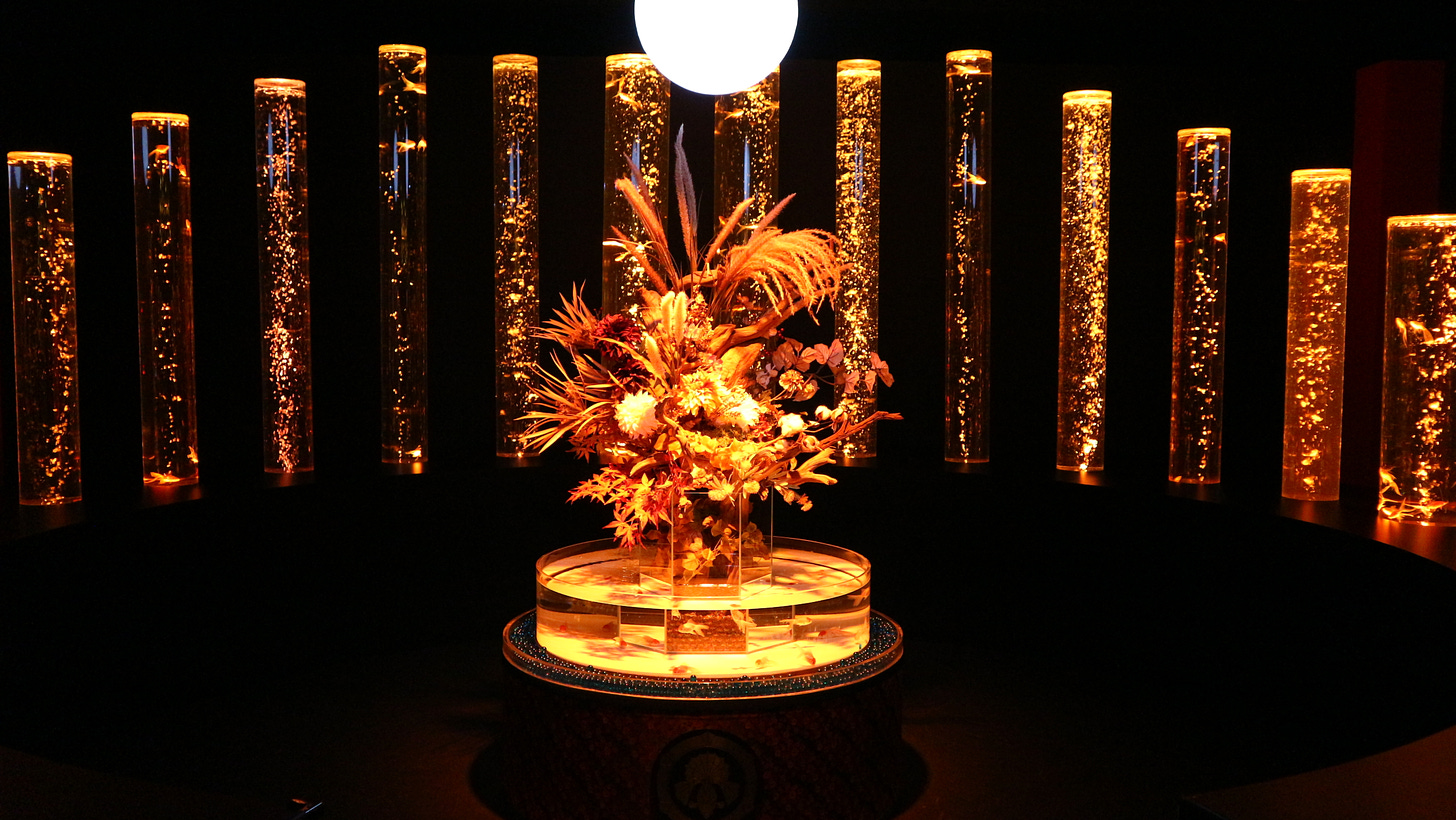
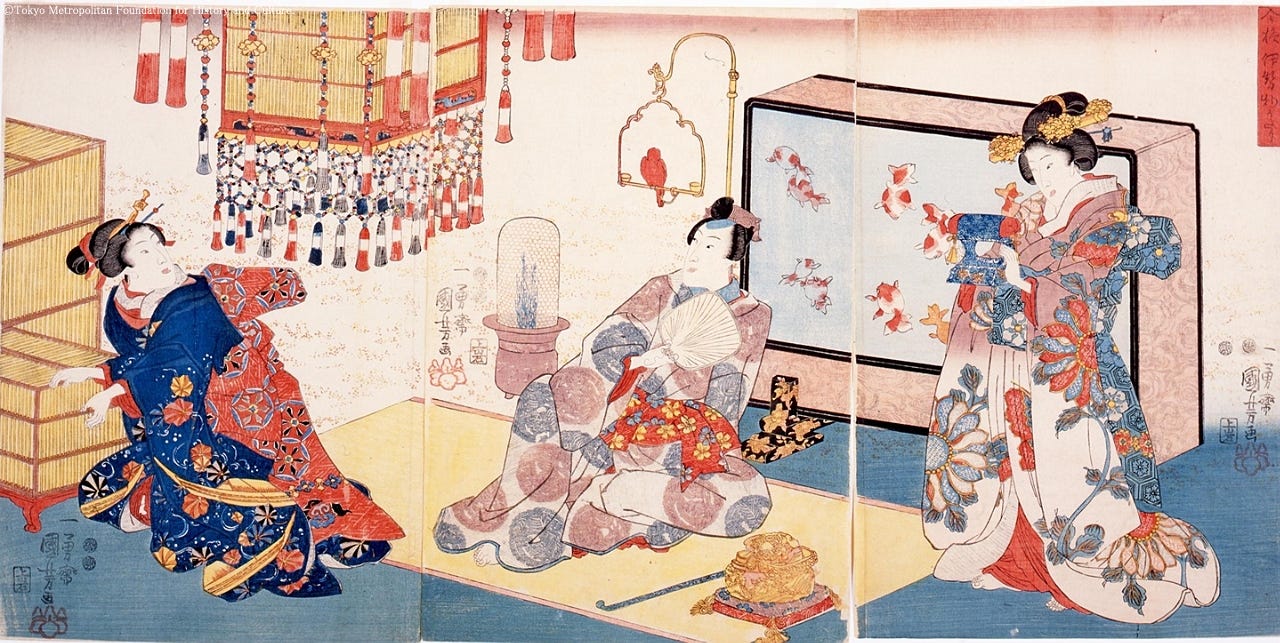
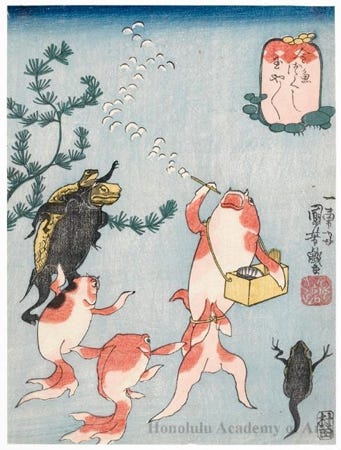
I really enjoyed this post! The pictures are beautiful and I had never heard of the museum before!
Such stellar images capturing so much beauty and marvel. Wealth of insight and wonder in this post!